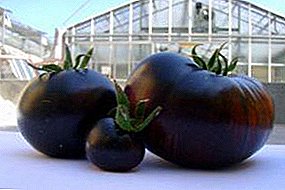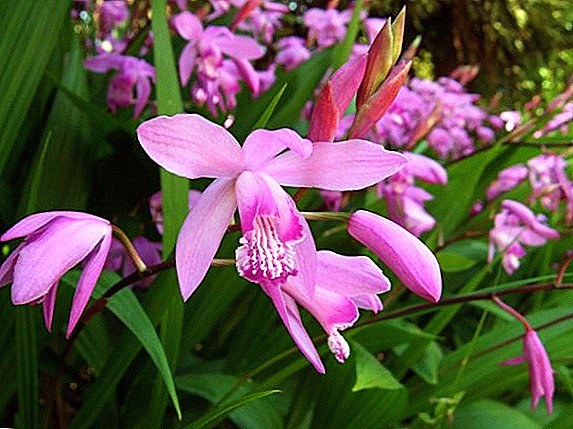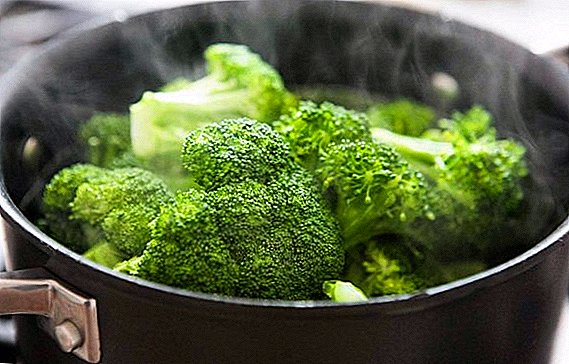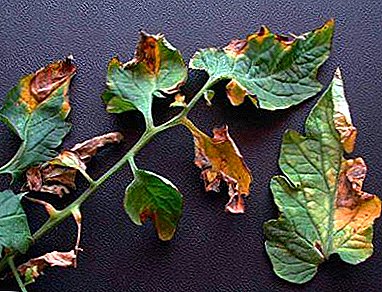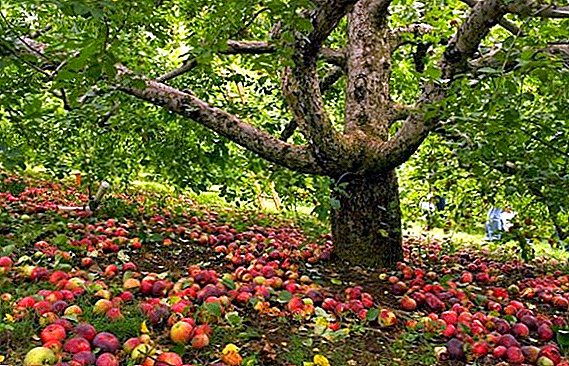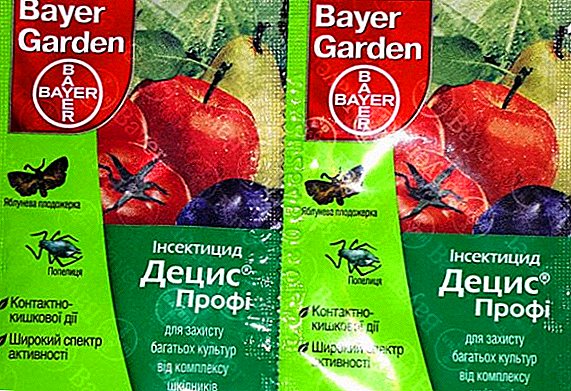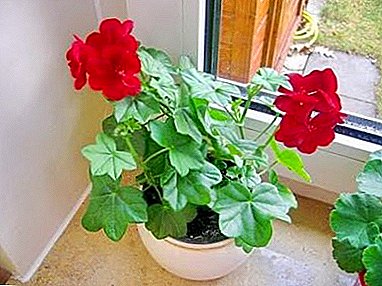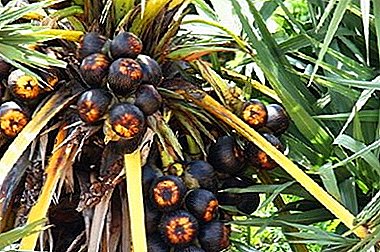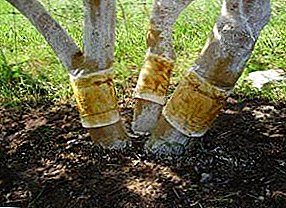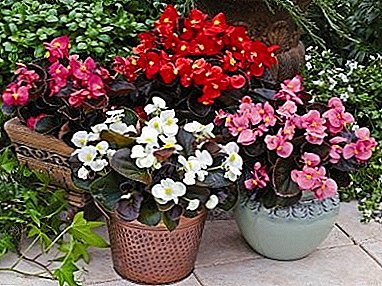
This low (up to 40 cm) type of begonia comes from the Brazilian tropics, where there is no cold and snow, so its flowers really have the opportunity to thrive there throughout the year.
Spectacular, long-term, thermophilic and unpretentious a native of Brazil has long enjoyed the attention of breeders.
Currently, many varieties of begonia are always flowering, including those resistant to the temperature conditions of a cool summer of the middle belt.
Such varieties cultivated as annuals, growing them indoors, and then planting them in open ground in spring, when the threat of frost is over.
When the autumn cold snap plants are removed.
Well-preserved strong specimens, which will serve as a source of cuttings for shoots of the next summer season, are sent for warm wintering.
- The following varieties of everglowing begonias are most suitable for such cultivation:
- Alba - tall, up to 40 cm, spreading, with dark green foliage and white flowers, grouped in groups of 12 pieces.
- Kate Teicher - grows up to a height of 40 cm, green leaves are edged with red. Inflorescences are red, thirteen flowers.
- Carmen - medium tall (25 cm) variety with very dark, purple-brown foliage and pink flowers, grouped in six.
- Othello - 25-centimeter stems are bright scarlet flowers, blooming in abundance.
- Albert martin - undersized (15 cm) variety, green leaves with a red border. Bright carmine-purple flowers are combined into inflorescences of nine. On one plant, up to 55 flowers simultaneously unfold.
- Bella - low (19 cm), decorated with green leaves, edged with red and dark pink nine-flowered inflorescences. 140 flowers can bloom at the same time.
- Bicola - undersized (13 cm) variety with green foliage and white flowers with a pink border, grouped in groups of four.
However, even more numerous "ever flowering" varieties are grown in room culture.
Home care

Lighting
Bright light is required. The best lighting would be windows facing east or southwest. On the windows of the northern directions, as well as in the season of short daylight hours, for the "eternal flowering", it is necessary to shine - so that the light period is 16 hours per day. On the south and southeast side, shading may be required - especially at the height of summer.
Temperature
The best temperature range during the whole year - from 20 to 25 degrees.
How to save begonia ever flowering in winter?
If the begonia semiperflorens in the winter time is contained with a short light day, you need to transfer it to rest mode - contain at a temperature of 12 to 15 degrees, but not lower than: temperature + 12ºС is critical for originally tropical plants.
Priming
There are no special requirements for the soil substrate: it must be slightly acid, fairly loose, nutritious, with good air and moisture permeability.
Can use ready soil for begonias, or garden soil with a good dose of perlite or vermiculite, as well as prepare a mixture of equal parts of leafy earth, humus and sand.
Landing

Container for landing maybe rather wide than deep (plant roots develop in the surface layer of the soil), with mandatory drainage hole. Since water stagnation is extremely unfavorable, it is better to choose porous material ceramics without a continuous layer of glaze.
At the bottom of the container must have drainage layer of small pebbles or expanded clay, then a small hill is poured over the soil, over which mainly the horizontal root system is placed and the soil mix is filled to the desired level, gradually consolidating it.
In one container you can plant several plants close enough to each other - with a minimum food area of 10x10 cm for each.
Transfer
Transplanted as you grow: young specimens more often, mature ones less often, up to replacing the transplant with a partial renewal of the surface layer of the soil in the pot. In this case, as a rule, old plants lose their decorativeness and are replaced by young ones grown from cuttings.
Watering
Watered moderately in the morning or evening. At the same time, the main goal is to prevent the soil and root system from drying out or the soil moisture stagnation.
Between watering soft, not cold water the soil should dry out a little.
Air humidity
Necessary to maintain the atmosphere high humiditysimilar to native tropics, but direct spraying the bush is not good neither leaves nor flowers: they appear dark spots.
Should spray the water around the begonias, or place near wide vessels with water, place the pot on a tray with moistened pebbles.
Top dressing

Feed the plant once a month a weak solution of mineral fertilizers with a slightly reduced nitrogen component. Potassium and phosphorus, necessary for flowering plants, must be present in full.
If a wintering begonias ever flowering warm and brightfeeding do not stop.
Growth and pruning
This species does not grow above 40cm, but trimming - mainly after wintering - held: overlong shoots are shortened, weak ones are removed.
With spring pruning, cuttings can also be prepared for vegetative propagation.
Bloom
Potentially, “semperflorens” is really capable of blooming at all times, revealing new and new, terry and simple with all its tropical forces, inflorescences of diverse shades, combinations and transitions: from white and soft cream to ultra dark red.
The main guarantee of this miraculous phenomenon gives a constant light, moderate heat and moisture - both in the soil and in the air.
Breeding
Begonia ever flowering propagated vegetatively - cuttings as well seeds.
To maintain the fluffiness and coloring of terry flowersneed to apply exclusively vegetative propagation.
Reproduction stem cuttings

Use spring and summer cuttings about 10 cm long, on which there are 2-3 pairs of leaves. Sections are dried, lower leaves are removed.
You can apply the pre-rooting of cuttings in water, process the lower sections with root formation stimulants, or immediately plant them in ordinary soil with additional addition of sand.
Planting cover with plastic wrap, kept warm (+22-25ºС), air and moisturize.
After the formation of the root system and the formation of new shoots (approximately during the month), the cuttings are seated in separate containers with the usual soil mixture.
Seed propagation
This method is often used for growing seedlings in open ground, in one-year mode.
At the end of winter small seeds are placed on the surface of the soil mixture, sprayed with water, covered with plastic film, aerated, kept at 22-25ºС and good lighting.
Shoots appear after 2-3 weeks.
After formation two or three true leaves seedlings dive carefully reduce the temperature to 17-18ºС and limit watering.
As they grow, they are seated. Flowering can begin as early as the age of 12-20 weeks.
Signs of trouble
The leaves turn pale shoots stretched - The result of insufficient illumination, especially in winter. It is necessary to provide the optimum light mode, to arrange the lighting in the period of a short daylight hours.
The intensity of flowering decreases - Excessive bright light and excessive humidity. The plant needs shading and airing.
The edges of the leaves turn brown and dry - dry air and overheating. Exposure to direct sunlight should be limited and air should be humidified.
Buds fall, flower buds dry - low air humidity. It is necessary to moisten it additionally.
Begonia drops flowers - this happens with a sharp change in temperature and humidity; may be observed in a newly acquired or suddenly displaced specimen - as a stress reaction, which takes place as it adapts to new conditions, if they meet the needs of the plant.
Leaves and stems turn black - usually in frostbitten specimens that are grown in open ground. Choose intact, strong bushes, transplant them into pots and transfer to a warm room.
Diseases and pests of the ever flowering begonias

Care errors first of all stagnation or lack of moisture in the soilweaken the plant and provoke its defeat powdery mildew. In this case, you need to optimize watering and process the begonia. fungicides.
Combination high humidity and low temperature leads to development root or leaf rot.
If the process has just begun, you should immediately optimize the temperature and humidity conditions and remove the damaged parts.
In the case of a strong defeat, you will have to root the cuttings, cut from healthy shoots, and keep them in appropriate conditions, and get rid of the rest of the plant.
Begonia can attack whitefly, thrips and shield. As a first measure, use the removal of pests with a cotton swab dipped in alcohol, or treatment with a soap solution. The most effective pest remedy - systemic insecticides.
Indoors with humid air, where it is warm and light all year round, begonia always flowering (Begonia semperflorens) fully justifies its promising botanical name, almost without ceasing to form and develop flower buds during all four seasons.
A photo
Next, you can see photos of planting and home care for the Everlasting Begonia:






